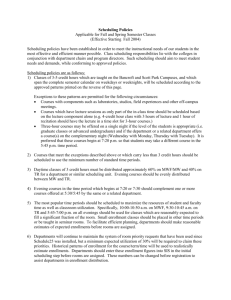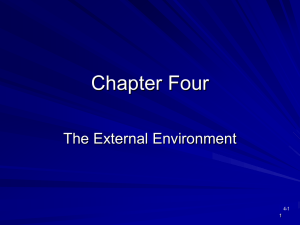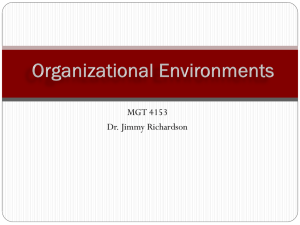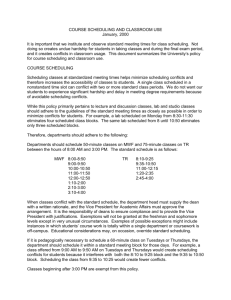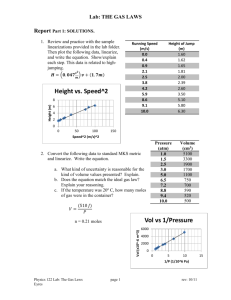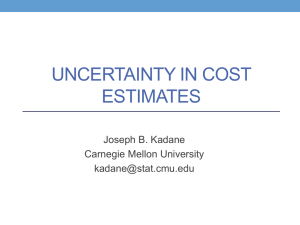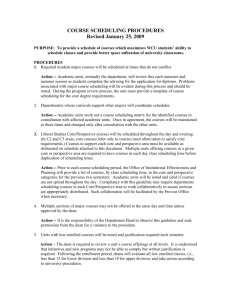Project Management in Our Contemporary Society
advertisement
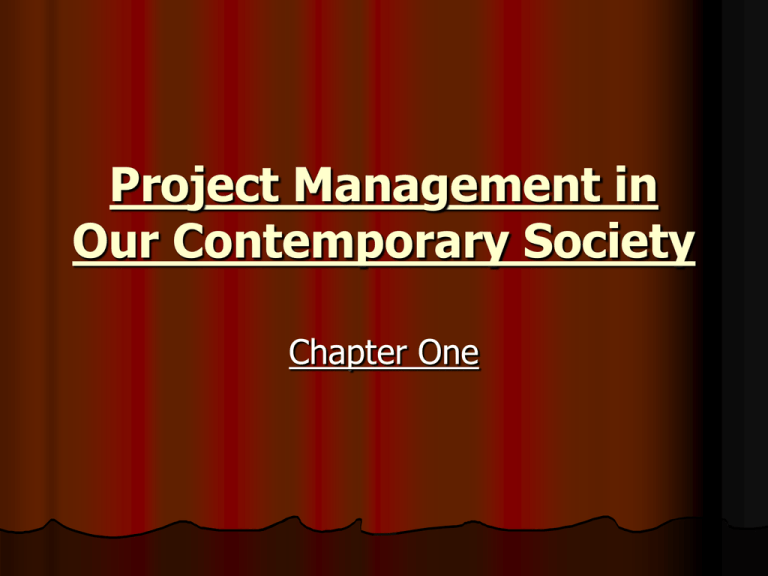
Project Management in Our Contemporary Society Chapter One The definition of a “Project” “A temporary endeavor undertaken to create a unique product or service.” It is sometimes useful to make distinction between terms as project , program, tasks, and work packages. program projects tasks work packages work units. The project is characterized through its attributes. Attributes of a project Importance: The most crucial attributes of a project is that it must be important enough in the eyes of a senior management to justify setting up a special organizational unit outside the routine structure of the organization. If the rest of the organization senses, or even suspects, that it is not really important, the project is generally doomed to fail. 1. Attributes of a project 2. Performance A project is usually a one-time activity with a well-defined set of desired end results. It can be divided into subtasks that must be accomplished in order to achieve the project goals. The project is complex enough that the subtasks require careful coordination and control in terms of timing, precedence, cost and performance. Attributes of a project 3. Life cycle with finite due date: Like organic entities , projects have life cycles. From a slow beginning they progress to a buildup of size, then peak, begin to decline and finally must be terminated by some due date.( also like organic entities, they resist termination) Attributes of a project 4. Interdependencies Projects often interact with other projects being carried out simultaneously by their parent organization. Typically these interactions take the form of competition for scarce resources between projects. Although the functional departments of an organization interact with one another in regular, patterned ways, the patterns of interaction between projects and these departments tends to be changeable. PM must keep all these interactions clear and maintain the appropriate interrelationships with all the external groups. Attributes of a project 5. Uniqueness Though the desired end may have been achieved elsewhere, they are at least unique to the organizations. Moreover, every project has some elements that are unique to that organization. no 2 construction or R&D projects are precisely similar. The degree of customization, and the presence of risk can alter characteristics in similar projects. Projects by their nature cannot be completely reduced to routine The PM’s is emphasized because , as a devotee of management by exception, the pm will find there are a great exceptions to manage by. Attributes of a project 6. Resources Projects have limited budgets, both for personal as well as other resources. Often the budget is implied rather than detailed, particularly concerning personnel, but it is strictly limited. Attributes of a project 7. Conflicts More than the mangers, the PM lives in a world of characterized by conflicts. Projects compete with functional departments for resources and personnel. More serious, with the growing proliferation of projects, is the project-versus-projects conflicts for resources within multi project organizations. The 4 parties–at-interest or stakeholders (clients, parents organization, projects team and the public) in any project even define success and failure in different ways. Non projects and Quasi-projects The use of manufacturing line to produce a flow of standard products is a non project. They are all routine Quasi – projects are those which have a Resembling or having a likeness to projects but the terms as performance, scheduling and budgets are implied in different manner. The Project Life Cycle Most projects go through similar stages on the path from origin to completion. There are following for phases in a project, collectively called Project life cycle. In the initial phase one that is the start-up phase or formation ( conception) The second stage is the build-up stage or the selection stage The third is the main program stage or the implementation phase which includes all the planning, scheduling, monitoring and control The final stage is the phase-out stage or the termination phase. (Figure 1) The pattern for the slow-rapid-slow progress towards the project goal is common. It is the result of the changing levels of resources used during the successive stages of the life cycle. Minimal efforts is required at the beginning , when the project concept is being developed and subjected to project selection process. Activity increases as planning is completed and the real works of the projects gets underway. This rises to the peak and then begins to taper off as the project nears completion, finally ceasing when evaluation is complete and the project is terminated Figure 2 While the rise and fall of efforts always occurs, there is no particular pattern that seems to typify all projects, nor any reason for the slowdown at the end of the project to resemble the buildup at its beginning. Some projects end without being dragged out. That is it gradually slows down until one is almost surprised to discover that project activity has ceased. In some cases the effort may never fall to zero because the project team may be maintained for a next project that comes along. The new project will then rise, phoenix- like, from the ashes of the old. Time-cost &Performance in PLC The ever-present goals of meeting performance, time and cost are the major considerations throughout the PLC It was generally thought that performance took precedence at early phase where planners focus on finding the specific methods required to meet the project’s performance goals. At times team members are so consumed with improving performance that result in delayed schedules and ultimately higher costs. At the same time technology of project is defined, the project schedule is designed and project costs are estimated. It is assumed that project cost are of prime importance in the high activity stages and schedule becomes paramount in the final stages, when the client demands delivery But recent researches indicate that the above assumptions are untrue. Performance and scheduling are more important than cost during all stages. Figure 3 A particularly important alternative life cycle shape can be captured by the analogy of “baking a cake” A number of such actual projects prevail in computer software projects and chemical industries. Risk during the life cycle It would be a great source of comfort if one could predict with certainty, at the start of the project, how performance ,cost and scheduling would be met. Figure 4: as we see the uncertainty can be seen at the beginning of the project Figure 5: this diagram shows how uncertainty decreases as the project moves towards completion From the project start point t o, the band of uncertainty grows until it is quiet wide by the estimated end of the project. As the project actually develops, the degree of uncertainty about the final outcome is reduced. t1 . t A later forecast made at 2 , reduces the uncertainty further. It is common to make new forecasts about project performance, time and cost either at fixed intervals in the life of the project or when specific milestones are reached.

